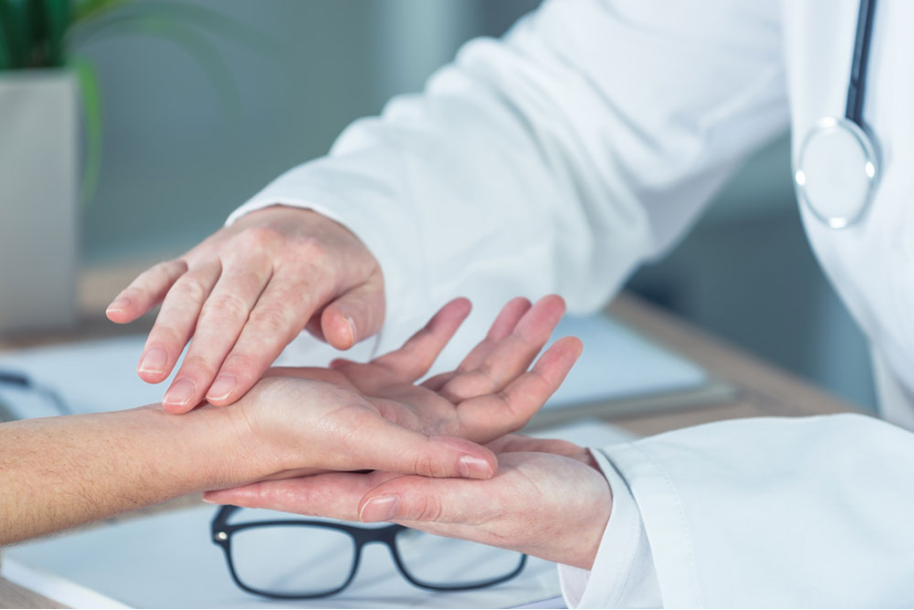VIP Travel Experiences: Top Tips and Destinations for Your Next Trip
Best Budget Airlines in the US: Affordable Travel Options
12 Best IKEA Kitchen Products to Upgrade Your Space
15 Stylish Thanksgiving Home Decor Ideas for the Holidays
7 Best Mental Health Activities For Kids
Conscious Vs Subconscious Mind: What's The Difference?
5 Exciting Popular Mobile Phone for Kids in 2024
10 Effective Baby Sleep Hacks: Establishing a Bedtime Routine
11 Common Symptoms of Dermatomyositis
Dermatomyositis is a rare inflammatory disease that is common in children between the ages of 5 and 15. It can even affect adults in their late 40s to early 60s. Although a cure for dermatomyositis has not yet been found, the goal of treatment is to relieve symptoms and reduce the risk of recurrence. Affected people need to pay attention to related symptoms so that they can be diagnosed and treated in time.
Dermatomyositis is a rare inflammatory disease that is common in children between the ages of 5 and 15. It can even affect adults in their late 40s to early 60s. Although a cure for dermatomyositis has not yet been found, the goal of treatment is to relieve symptoms and reduce the risk of recurrence. Affected people need to pay attention to related symptoms so that they can be diagnosed and treated in time.

1. Rash
One of the first symptoms of dermatomyositis is a rash. It looks like a purple or dark red rash that appears swollen. It can occur on parts of the body that are frequently exposed to the sun, including the face and eyelids, knuckles, knees, chest, and back.
The rash usually feels painful and itchy and is the first noticeable symptom of dermatomyositis and should not be ignored.
2. Muscle Pain
Discomfort may occur due to injury or excessive muscle tension. This pain may go away over time or with proper treatment. However, a persistent feeling of pain in the muscles may indicate the presence of health complications such as dermatomyositis. Since most parts of the body have muscle tissue, affected people may feel pain anywhere. Muscle pain can make it difficult for a person to perform normal movements, including getting up from the floor or climbing stairs. People must be diagnosed by a medical professional immediately and begin appropriate treatment to relieve pain.
3. Scale deposits
A common symptom in children with dermatomyositis is calcium deposits. These may occur in areas such as the skin, muscles, and connective tissue. The deposits can harden tissues, organs, or blood vessels. As a result, the body's normal processes may not function properly. Scale deposits are also one of the early symptoms of the disease.
4. Fever
A person with dermatomyositis may have a fever. You may also have a fever along with other dermatomyositis symptoms, such as body aches. Some people with dermatomyositis may also notice an unexplained drop in their body mass index (BMI).
In both cases, symptoms should be evaluated by a doctor and treated as soon as possible.
5. Dysphagia
Dysphagia (difficulty swallowing) can be caused by a variety of reasons, including dermatomyositis. Because this disease affects the muscles, it also affects the muscles in the esophagus. When the muscles swell or become damaged, they shrink and block the esophagus, causing difficulty swallowing. The symptom can also cause a feeling that food is stuck in the throat or in the chest or behind the sternum. Early diagnosis and treatment are essential to avoid further complications. For example, people who have difficulty swallowing may aspirate food or liquids, including saliva, into their lungs. This can lead to complications such as aspiration pneumonia, which requires immediate medical attention.
6. Shortness of breath
Lifestyle habits such as excessive exercise, or even health problems such as colds, can trigger shortness of breath, which usually goes away with the right treatment. However, if this symptom is unusual or does not go away, it may indicate a more serious health problem, such as dermatomyositis. Shortness of breath is also associated with inflammation of the throat muscles, which can cause the airways to narrow and lead to breathing problems.
7. Hoarseness
A common symptom of dermatomyositis is hoarseness, also known as dysphonia. You may notice that your voice becomes hoarse or strained, and that it sounds softer, higher, or lower than usual. These symptoms can make it difficult to speak. Hoarseness may also be associated with other symptoms of dermatomyositis, such as difficulty breathing or swallowing, and must be treated immediately.
8. Joint pain
Joint pain can occur anywhere in the body. This symptom can indicate a variety of health problems, including dermatomyositis. Joint pain can range from mild to severe, and the treatment required will be determined accordingly.
9. Lumps in the Knees or Elbows
While there are a variety of reasons why lumps in the knees and elbows can occur, including allergic reactions or injuries, health conditions such as dermatomyositis can also trigger this symptom. Lumps in the knees and elbows can be small or large, soft or hard, and inflamed or not. If left untreated, this condition can even lead to permanent skin damage.
10. Stomach Pain
Gastrointestinal ulcers are a common complication of dermatomyositis in children. They can develop in the lining of the stomach and the upper part of the small intestine. Children with GI ulcers may experience stomach pain. Other symptoms that may indicate the presence of an ulcer include bloating, bloating or burping, heartburn, nausea, and intolerance to fatty foods.
11. Paleness
Dermatomyositis often leads to health problems such as Raynaud's syndrome. People with this condition may notice that their toes, fingers, cheeks, nose, and ears become pale in cold weather. Conditions caused by dermatomyositis can also cause the fingers or toes to feel cold, and warming them up can cause a tingling, numb sensation.
Disclaimer:
Articles discussing symptoms, treatments, health conditions, and side effects are for informational purposes only. Readers should not interpret the information provided on this website as professional advice. Readers are advised to use their own judgment and not to consider the advice or opinions of authors and editors as medical advice. It is important to seek the help of a licensed and experienced medical professional when necessary.












